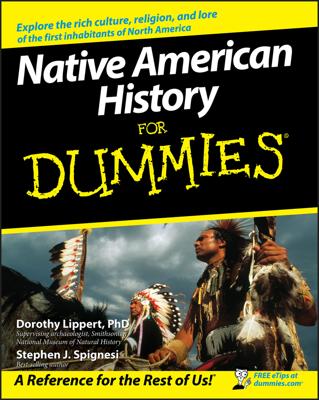The first Americans probably wandered over from Asia about 14,000 years ago, which in geologic terms is an eye blink ago. Over the succeeding four or five millennia, they spread out over the North and South American continents.
There weren’t a whole lot of these first Americans, at least not in what became known as the United States of America, but they were wildly diverse in their customs and culture. Many of the differences had to do with the environment in which they settled.
Fast-forward to around AD 985. Northern Europeans popularly known as Vikings showed up on the North American continent but stuck around only long enough to irritate the Native Americans they encountered. Within about 40 years, the Vikings gave up trying to establish a permanent foothold on the continent.
But two things — greed and imagination — prodded other Europeans into taking their place. Looking for a new route to the riches of the East (particularly spices), explorers such as an Italian weaver’s son named Christopher Columbus thought they might sail west around the globe until they hit Asia.
Of course, the Americas got in the way. Rather than reverse course, Columbus and his counterparts refocused their priorities to exploring and exploiting the New World.
The exploiting part of that plan included enslaving or killing off the native population. Sometimes the killing was deliberate; sometimes it was inadvertent, through the introduction of diseases for which the Native Americans had no defenses, for example.
Catching up to the Spanish
Spain got a head start in the Americas, mainly because the aforementioned Italian named Columbus was working for the Spanish and got them enthusiastic about exploring the Americas early on. But while the Spanish had a head start, other European countries eagerly sought to catch up. France split its efforts between colonizing and just carting off resources like fish and furs.
But the English took steps to make their presence more permanent.
English settlements were founded for both economic and ecclesiastical reasons. In the South, colonists hoped to make money by growing tobacco, and later, cotton. To make their enterprises more profitable, they imported slaves from Africa. It was a practice that would prove far more costly in terms of human misery than the crops were ever worth.
In the North, settlers who had fled religious persecution established colonies based heavily on religious principles (although they weren’t averse to making a buck). Like the Spanish, English settlers often found the easiest way to deal with those who had arrived first — the Native Americans — was to shove them aside or kill them.
But the English colonists were a bit more tolerant to the arrival of other Europeans, and the American colonies grew rapidly.
It’s revolutionary!
It was probably of small comfort to the Native Americans, but the French and British also spent an inordinate amount of time killing each other. Throughout much of the 18th century, the two nations squared off in a series of wars that were fought in both Europe and the New World.
When the dust settled, Britain had cemented its position as top dog among the European powers in North America. But a new power — whose members increasingly called themselves Americans — was beginning to assert itself.
Stung by slights both real and imagined from the mother country, American colonists grew restless under British control. In 1776, after a series of provocations and misunderstandings, the colonies declared themselves independent.
The American Revolution took seven years for the colonists to win. To do so took a brilliant leader in George Washington, a timely ally in France, and healthy helpings of tenacity and luck.
Making a country out of the victorious colonies also took tenacity, luck, and genius. Over the summer of 1787, a remarkable group of men gathered in Philadelphia to draw up the rules for the new nation. The United States of America promptly flashed its precocity by electing Washington as its first president, setting up a reasonable financial system, and avoiding war with European countries long enough to get itself established.

